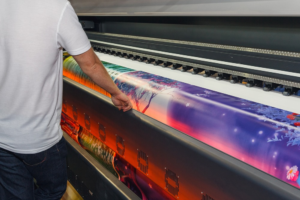Autoleveller Calibration for Drawframe
Most of the drawframe autolevellers are open loop auto levellers. In open loop autolevellers, sensing is done at the feeding end and the correction is done by changing either a break draft or main draft of the drafting system, says Temesgen Regassaa, Higher Textile Engineer, ETIDI.
Autoleveller is an additional device which is meant for correcting the linear density variations in the delivered sliver by changing either the main draft or break draft of the drafting system, according to the feed variation .. There are two types of Autolevelling systems: Open loop system, and closed loop system. Most of the drawframe autolevellers are open loop auto levellers. In open loop autolevellers, sensing is done at the feeding end and the correction is done by changing either a break draft or main draft of the drafting system. In closed loop system, sensing is at the delivery side and correction is done by changing either a break draft or main draft of the drafting system. Most of the earlier card autolevellers are closed loop autolevellers. But the latest cards have sensing at the feed rollers and as well as at the delivery calender rollers. We can say, both closed loop and open loop systems are being used in such autolevellers. An ideal location for Autoleveller blow room. We need only one Autoleveller. If the material is corrected in blow room, the material may get deteriorated at subsequent machines. So the purpose of correction is defeated.
Roving frame & ring frame
Theoretically, if we put Autoleveller at roving and ring frame, we need 1,150 and 18,000 Autolevellers respectively; which is impossible. At draw frame: Less no. of samples, cost of test is less, low time, and no. of machines to be controlled is Autoleveller calibration (Rsb 951) by using multimeter and tachometer.
- By ON the Autoleveller, make calibration
- Checking power supply
- Checking power supply of servo amplifier
- Measured at power connector X92
- Checking power supply of servo amplifier. Checking the condition of sensor (mechanical to electrical). This is

Draw frame is the ideal point for count variation control! Why?
B/C; Statistically; n= (4*(CV%)2)/(Error)2 n= No. of reading (observation), CV% = Count coefficient of variation

done by putting 4 mm gage at top (Autoleveller scanning roller) and putting 6 mm at bottom (sensor)
D. Servo-drive checking
- M-90 is closed check the braker function with the machine stop: It must not be possible to tum the cot belt
- M-90 is open-bridge the terminals 21 and 33 on terminal D90 It must be easily turn
- M-90 will be open
- Bridge the terminals 21 and 33; 34 and ground on terminal D90 (the motor will rotate freely)
- E. Speed adjustment of the servo-drive
- Machine should run at normal speed without material
- R38 (leveling intensity must be five)
- Remove the belt from the driving sensing roller gearing
- Disconnect Al at speed control UC (k91)
- Measure the speed at the main shaft of the machine (nA)
- Calculate the speeds required at the differential gearing output (nB) at different gauges
In respective gauges, if calculated result and measure one is not equal; i. e; A% checking
- A% or auto leveler or sliver test is a test used to check whether the auto leveler works or not to the required limit at finisher draw frame
- Used to adjust the leveling intensity for the fine correction of the sliver error by evaluating the sliver thickness
- With a three-shift operation, a sliver test should be conducted about once a month, in order to optimise the leveling intensity
- Prior to adjusting the autoleveller, the draw-frame has to be correctly set with the autoleveller switched off. The draft, roll settings, speeds, tension drafts and components have to be carefully optimised
Steps
- Produce sliver with the normal (n) number of doublings and take three samples of 10 m each. Weigh each sample and determine the g/m or grains/yard. Calculate the overall average weight
- Produce sliver with one less sliver (n-1) in the feed and calculate the overall average
- Produce sliver with one additional sliver (n + 1) in the feed and calculate the overall average
- From the two A%-values, create the mean value of the values (without pre-sign).
Over and under-corrections
- Over and under-corrections are the two frequently encountered problems in the use of the autolevelling system
- If an over-correction occurs, a thicker portion of fibrous strand is converted to a thinner portion, or a thinner portion is converted to a thicker portion, due to an inappropriate (over) adjustment of the draft
- This may be caused by either incorrect signal generation or incorrect signal processing by the electronic system
- In the case of an under-correction, an inappropriately thick or thin portion of the fibrous strand remains as a faulty portion of lesser magnitude, even after autolevelling
- This happens due to a change in the draft that is insufficient to rectify the problem
For old models of finisher draw
- The intensity of leveling device is set by using R38
- The change of setting from one mark of the scale to next mark achieves the change of approx. 0.25 per cent
Article mentored by: Texcoms Textile Solutions
Source: The Indian Textile Journal | September 2019 | 116-117


